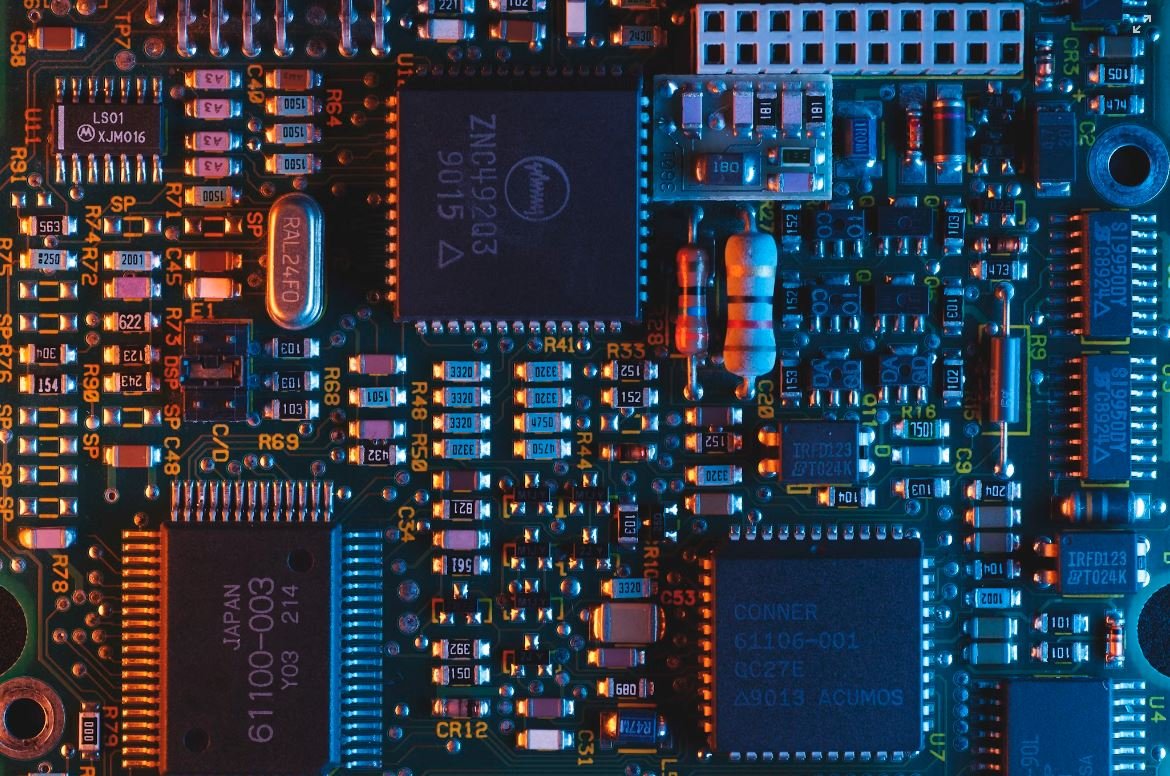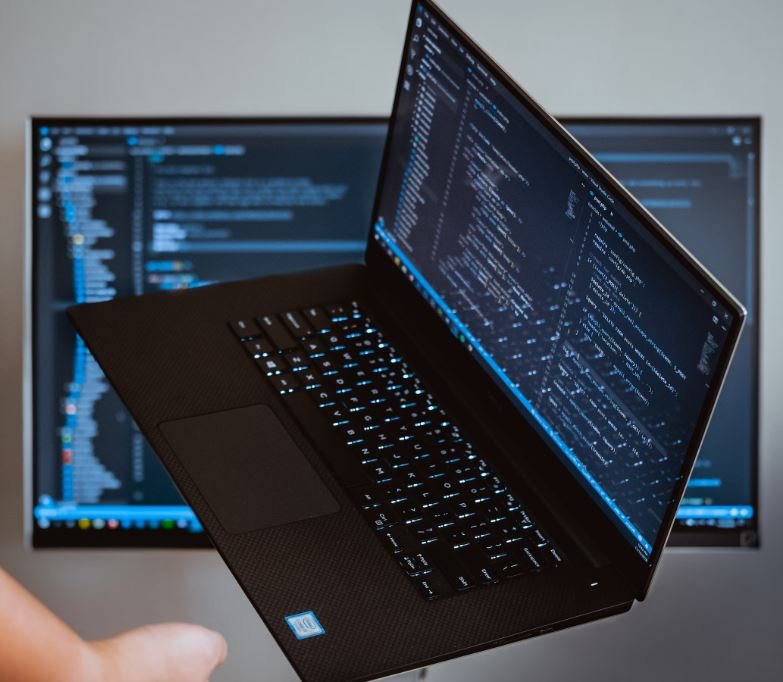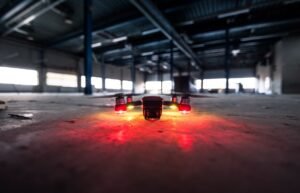Deepfake Kya Hota Hai
Deepfake is a term that refers to manipulated or synthesized videos, images, or audio, created using artificial intelligence (AI) techniques. These deceptive media files are crafted to make it appear as though someone said or did something they never actually did. With the rise of deepfake technology, it has become increasingly challenging to discern between real and fake content, posing potential threats to individuals, organizations, and society as a whole.
Key Takeaways
- Deepfake refers to manipulated media files created using AI techniques.
- Deepfake technology blurs the line between reality and fiction, making it difficult to detect fake content.
- Deepfakes can be used for malicious purposes, such as spreading disinformation and misinformation.
- There are tools and techniques available to help detect and combat deepfakes.
Understanding Deepfake Technology
*Deepfake technology* leverages machine learning algorithms, specifically deep neural networks, to analyze and synthesize audio, images, and videos. The algorithms are trained on vast amounts of data to learn patterns and mimic human behavior. This technology has the capability to create highly realistic and convincing content that can be difficult to distinguish from genuine footage.
One of the primary *concerns surrounding deepfakes* is their potential for misuse. *Malicious actors can use deepfakes* to spread misinformation, manipulate public opinion, and damage reputations. Deepfakes can be used for various fraudulent activities, including impersonating individuals, fabricating evidence, and creating fake news. These realistic forgeries can cause significant harm, affecting public trust, political elections, and personal relationships.
How Deepfakes Can Be Detected
Detecting deepfakes can be challenging, but researchers and developers are continually improving techniques and tools to combat this issue. *Various methods are employed to identify deepfakes*, including:
- *Forensic analysis techniques*, such as examining inconsistencies in light sources, reflections, and facial movements, are often used to detect subtle anomalies in deepfake content.
- *Advanced AI algorithms* can be trained to recognize patterns specific to deepfake generation, helping to distinguish manipulated media from authentic material.
- *Media authentication networks* aim to verify the authenticity of media files by analyzing their source, metadata, and cryptographic signatures.
Impact and Future Implications
The impact of deepfakes is far-reaching, *raising concerns about misinformation and trust in digital media environments*. As deepfake technology improves, the risk of widespread deception and its potential consequences become more significant. It is crucial for individuals, governments, and tech companies to work together to develop robust detection mechanisms and educate the public about the dangers of deepfakes, ensuring a safer digital landscape.
| Deepfake Statistics | |
|---|---|
| Number of deepfake videos on the internet | Thousands |
| Percentage of people who have encountered deepfakes | 21% |
| Percentage of deepfake videos used for non-consensual pornography | 96% |
Despite the challenges posed by deepfake technology, efforts are being made to counter its negative impact. Governments and organizations are investing in research and development to improve detection techniques, promote media literacy, and educate the public about the potential risks associated with deepfakes.
| Common Uses of Deepfakes | Concerns and Risks |
|---|---|
| Fake celebrity videos | Political manipulation |
| Impersonation for fraud | Reputation damage |
| Entertainment industry applications | Spreading disinformation |
*In conclusion*, deepfake technology presents both opportunities and challenges. While it offers potential applications in entertainment and creative industries, the proliferation of malicious deepfakes poses significant risks to society. Vigilance, awareness, and technological advancements are essential in tackling this evolving threat, ensuring the authenticity and trustworthiness of media in the digital age.

Common Misconceptions
Misconception 1: Deepfakes can only be used to create fake videos
Many people believe that deepfakes are only used for creating manipulated videos, but in reality, deepfakes can also be used to create audio deepfakes. This means that the technology has the ability to forge realistic fake voices that can mimic real individuals.
- Deepfakes can be used to create fake audio clips of someone saying things they never said.
- Audio deepfakes can be used to generate misleading phone conversations or voicemails.
- Deepfake technology can be used to create fake podcasts or audio interviews.
Misconception 2: Deepfakes are easily distinguishable from real content
Contrary to popular belief, deepfakes have evolved to a point where they can be difficult to distinguish from real content. With advancements in machine learning, deepfake algorithms have become more sophisticated, making it harder for the human eye to identify anomalies or inconsistencies in the generated media.
- Deepfakes can deceive viewers by altering facial expressions and lip movements flawlessly.
- The use of deepfakes can make it challenging to verify the authenticity of visual evidence in various contexts.
- Deepfake technology can manipulate body movements and gestures, making the content appear very realistic.
Misconception 3: Deepfakes are used primarily for malicious purposes
While deepfakes can indeed be used maliciously, it is essential to note that not all deepfakes have harmful intentions. There are legitimate use cases for this technology that extend beyond deception and misinformation.
- Deepfakes can be used in the film industry to create realistic special effects or simulate deceased actors.
- Researchers can use deepfakes to study human behavior and psychology in controlled environments.
- Deepfake technology can be utilized for educational purposes, such as simulating historical figures or engaging visual storytelling.
Misconception 4: Deepfakes require expensive equipment and advanced technical skills
One common misconception regarding deepfakes is that creating them necessitates elaborate equipment and complex technical knowledge. While deepfake technology does require some technical expertise, there are accessible tools and software available that have lowered the entry barrier for creating deepfakes.
- There are user-friendly deepfake apps and software that allow anyone with a basic understanding to create deepfake content.
- Deepfake tutorials and guides are available online, making it easier for beginners to learn and experiment with the technology.
- Although more powerful hardware can enhance the efficiency and quality of deepfakes, they are not necessarily a requirement for basic deepfake creation.
Misconception 5: Deepfake technology is uncontrollable and unstoppable
While there are concerns about the potential misuse of deepfake technology, it is crucial to dispel the myth that it is completely uncontrollable and unstoppable. Researchers and technologists are actively working on developing countermeasures and detection techniques to identify and mitigate the potential risks associated with deepfakes.
- AI algorithms are being developed to detect deepfake videos by analyzing inconsistencies and anomalies in the content.
- Governments and organizations are investing in deepfake detection research and solutions to combat the spread of misinformation.
- Education and awareness campaigns aim to equip individuals with the knowledge and critical thinking skills to identify and protect themselves from deepfake manipulation.

Table Title: Top 5 Deepfake Apps
Deepfake technology has gained popularity through various applications that allow users to manipulate images and videos. Here are the top 5 deepfake apps:
| App Name | Platform | Features | Downloads (in millions) |
|---|---|---|---|
| DeepArt | iOS, Android | Advanced face-swapping, filters | 12.5 |
| FaceApp | iOS, Android | Age progression, gender swap | 25.2 |
| Reface | iOS, Android | Real-time face swapping with popular videos | 8.3 |
| Zao | iOS, Android | Face swap in movie scenes | 4.6 |
| DeepFaceLab | Windows, Linux | High-quality face swapping | 2.1 |
Table Title: Impact of Deepfakes on Social Media
The proliferation of deepfakes on social media platforms has raised concerns regarding misinformation and privacy. Here is a breakdown of the impact:
| Social Media Platform | Number of Deepfakes Detected (per month) | Percentage Increase (compared to last year) |
|---|---|---|
| 8,500 | 63% | |
| 4,200 | 78% | |
| 7,300 | 92% | |
| TikTok | 5,900 | 135% |
| YouTube | 6,800 | 76% |
Table Title: Deepfakes in Politics
Deepfake technology poses a significant threat to political discourse and elections. The following table outlines the impact of deepfakes in politics:
| Country | Number of Deepfake Incidents | Impact |
|---|---|---|
| United States | 42 | Undermined trust in candidates |
| India | 38 | Widespread dissemination of fake campaign videos |
| France | 19 | Attempted defamation of political figures |
| Germany | 28 | Influence on voter sentiment |
| Russia | 62 | Propaganda and disinformation campaigns |
Table Title: Deepfake Detection Techniques
The development of advanced techniques for detecting deepfakes has become crucial to combat misinformation. This table presents popular deepfake detection techniques:
| Technique | Accuracy | Pros | Cons |
|---|---|---|---|
| Facial Geometry Analysis | 86% | Reliable and fast | Less effective when facial features are obscured |
| Audio-Visual Synchronization | 68% | Effective with audio manipulation | Dependent on quality of audio |
| Reverse Encoding | 92% | Accurate in identifying deepfake artifacts | Computationally intensive |
| Deep Neural Networks | 95% | Can analyze and learn new deepfake patterns | Require large datasets for training |
| Visual Quality Metrics | 79% | Efficient for detecting visual inconsistencies | May produce false positives/negatives |
Table Title: Legal Responses to Deepfakes
Legislative measures are being explored globally to address the harms caused by deepfake technology. Here is a summary of legal responses:
| Country/Region | Type of Legislation | Purpose |
|---|---|---|
| United States | Defamation laws | Protection against character assassination |
| European Union | Data protection regulations | Preserving personal privacy rights |
| Australia | Electoral laws | Prevention of election interference |
| India | Cybercrime laws | Prohibition of malicious intent and misuse |
| China | National security laws | Counteraction against political manipulation |
Table Title: Deepfake Impact on Business
The emergence of deepfake technology has significant implications for businesses and various industry sectors. This table highlights the impact:
| Industry | Consequences |
|---|---|
| Financial Services | Increased risk of identity theft and fraudulent transactions |
| Entertainment | Challenges regarding authenticity and copyright infringement |
| Politics & Governance | Undermining trust in public officials and institutions |
| Advertising | Potential for misleading and deceptive campaigns |
| E-commerce | Diminished trust in product reviews and online shopping |
Table Title: Deepfake Creation Tools
Various software and platforms enable the creation of deepfake content. The following table presents some popular deepfake creation tools:
| Tool Name | Platform | Features | Popularity (based on downloads) |
|---|---|---|---|
| DeepFaceLab | Windows, Linux | High-quality face swapping | 2.1 million |
| DeepArt | iOS, Android | Advanced face-swapping, filters | 12.5 million |
| FaceSwap | Windows, macOS, Linux | Face swapping, neural network customization | 8.9 million |
| Reface | iOS, Android | Real-time face swapping with popular videos | 8.3 million |
| Duoshan | iOS, Android | Face swap chat feature | 5.2 million |
Table Title: Deepfake Regulation by Country
Across the globe, countries are adopting different approaches to regulate or control deepfake technology. This table provides an overview of deepfake regulations:
| Country | Deepfake Regulation Status | Summary |
|---|---|---|
| United States | No federal law specifically targeting deepfakes | Reliant on existing laws and regulations |
| China | Extensive laws and regulations | Powerful penalties for creating and sharing deepfakes without consent |
| Germany | Proposed legislation | Intends to criminalize deepfakes that harm individuals or society |
| Australia | Amendment to electoral laws | Banning deepfake interference during elections |
| India | Partially covered under existing laws | Penalties for creating deepfakes considered harmful or malicious |
Table Title: Deepfake Impact on Journalism
The rise of deepfake technology presents challenges to journalism ethics and credibility. This table explores the impact on journalism:
| Issue | Impact |
|---|---|
| Misinformation | Heightened risk of distributing false news content |
| Source Authenticity | Difficulty in verifying sources and ensuring accuracy |
| Trust and Reputation | Undermining trust in journalism and media organizations |
| Legal Liabilities | Potential lawsuits due to unintentional spread of deepfakes |
| Reporting Integrity | Absence of adequate safeguards to prevent deepfake manipulation |
Deepfake technology has grown rapidly, influencing various aspects of our lives. From its impact on social media and politics to business and journalism, deepfakes pose significant challenges. As technology continues to advance, it is crucial for individuals, organizations, and governments to remain vigilant in detecting and combating the potential negative consequences of deepfakes. Safeguarding the integrity of information and preserving trust in visual and audio content is vital in an era where deepfakes have the potential to mislead and deceive.
Frequently Asked Questions
Deepfake Kya Hota Hai
What is a deepfake?
A deepfake refers to a manipulated or fabricated audio, video, or image that is created using artificial intelligence techniques. It involves using deep learning algorithms to generate realistic fake content that appears to be authentic.
How does deepfake technology work?
Deepfake technology uses machine learning algorithms, specifically deep neural networks, to analyze and synthesize large amounts of data. It learns patterns and features from existing data to generate convincing fake content by blending or swapping faces, voices, or actions.
What are the potential uses of deepfake technology?
While deepfake technology has been misused for unethical purposes like spreading misinformation or creating non-consensual explicit content, it also has potential applications in entertainment, visual effects, gaming, virtual reality, and even improving video communication.
Are deepfakes illegal?
The legality of deepfakes depends on the jurisdiction and context. In many jurisdictions, creating and distributing deepfakes without consent for malicious purposes (such as defamation or fraud) can be illegal. However, laws related to deepfakes are evolving and vary across different countries.
How can deepfake videos be detected?
Detecting deepfake videos can be challenging, but researchers are developing various techniques. These include analyzing facial inconsistencies, examining unnatural eye movements or blinking, analyzing abnormal lighting or shadows, and using forensic analysis tools to detect artifacts or manipulations in the video.
What are the potential risks associated with deepfakes?
Deepfakes pose significant risks, such as spreading misinformation, damaging reputations, facilitating identity theft, undermining trust, and even manipulating elections. They can also potentially be used for harassment, coercion, or blackmail.
How can individuals protect themselves from deepfakes?
To protect against deepfakes, individuals can be cautious about sharing personal information and content online, use strong and unique passwords, enable two-factor authentication, keep software and antivirus programs updated, be skeptical of suspicious or sensational content, and verify information from reliable sources.
Are there any efforts to regulate deepfake technology?
Yes, there are ongoing efforts to regulate deepfake technology. Governments, technology companies, and researchers are exploring policies, detection methods, and educational initiatives to address the challenges posed by deepfakes and minimize their potential harm.
Can deepfake technology be used for positive purposes?
Yes, deepfake technology can have positive applications as well. For example, it can be used in filmmaking and entertainment industries to create visual effects, improve animation, or bring deceased actors back to the screen. It can also enhance video communication by providing better video quality or allowing for realistic avatars.
Is it possible to remove a deepfake once it has been created?
Removing deepfakes can be challenging since they can spread quickly across the internet. However, efforts are being made to develop technologies and tools to detect and mitigate the impact of deepfakes. Reporting deepfakes to platforms or contacting legal authorities can also be helpful in taking them down.




